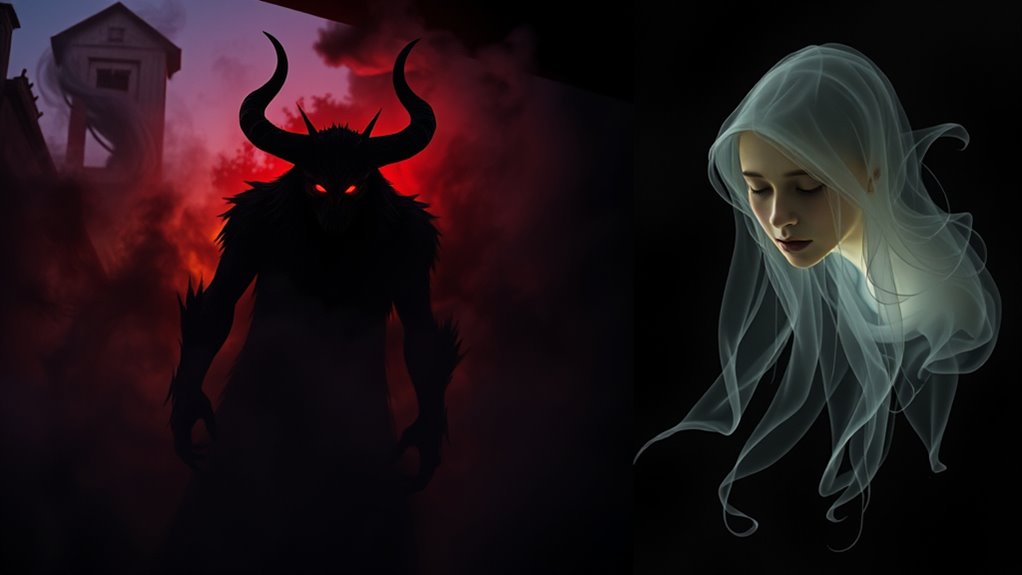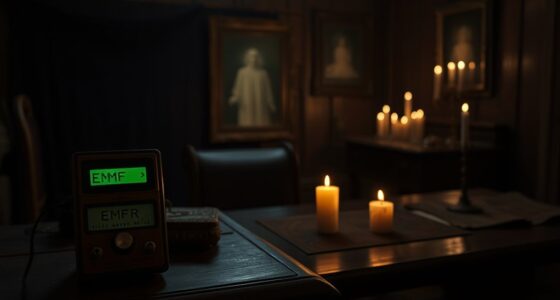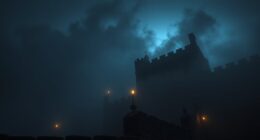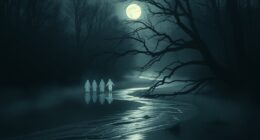Demons and ghosts are distinct entities in the supernatural domain. Demons are fallen angels embodying malevolence, aiming to lead you astray with temptation and deception. In contrast, ghosts are disembodied souls of the deceased, often seeking closure or connection due to unfinished business. While demons thrive on fear and chaos, ghosts may manifest as they did in life, caught in a state of transformation. Stick around to discover more about their unique roles and cultural perceptions.
Key Takeaways
- Demons are malevolent beings with a fixed nature, while ghosts are disembodied souls of deceased humans seeking closure or resolution.
- Demons aim to promote sin and deceit, whereas ghosts may appear due to unfinished business or emotional ties to the living.
- Poltergeists, often confused with ghosts, exhibit chaotic behaviors and are more closely aligned with demons, thriving on emotional energy.
- Cultural beliefs shape perceptions of both entities, with demons often viewed as purely evil and ghosts as spirits in transformation.
- Pop culture frequently misrepresents both demons and ghosts, leading to misconceptions about their true nature and roles in the spiritual realm.
Understanding the Nature of Demons

When you explore the nature of demons, you’ll find they’re often seen as fallen angels who chose to rebel against God. These entities embody malevolence and possess a fixed nature, meaning they can’t repent or change their ways.
In the paranormal world, demons aim to lead you away from truth, encouraging sin and deceit. Unlike ghosts, which are disembodied human souls, demons lack empathy and instead thrive on human emotional energy, particularly fear and anger. This makes you more susceptible to their influence.
The leader of demons, commonly referred to as Satan, epitomizes the struggle between good and evil, seeking to claim souls for hell. Understanding these malevolent beings is essential in maneuvering the complexities of the supernatural.
Exploring the Characteristics of Ghosts
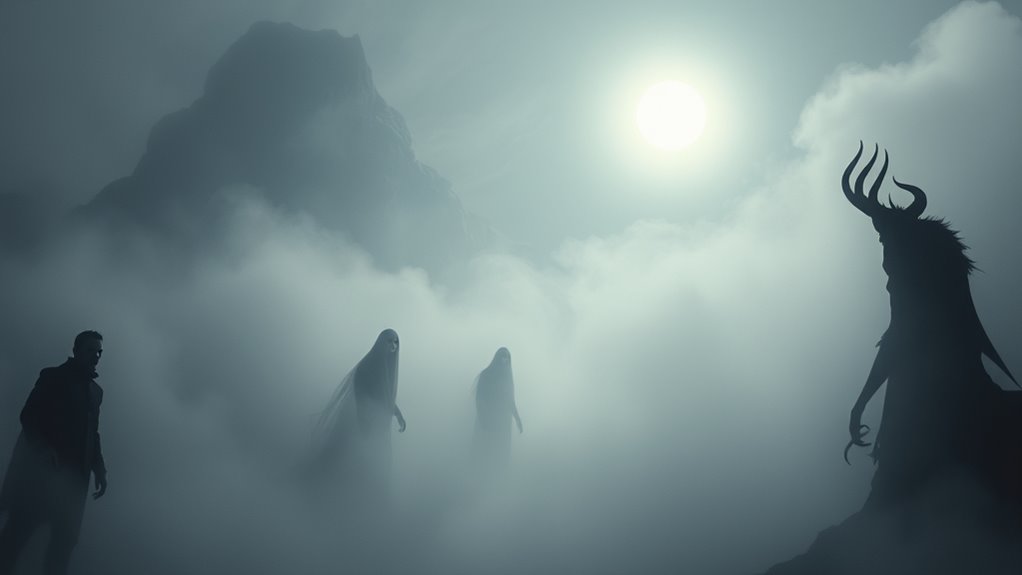
Have you ever wondered what truly defines a ghost? Ghosts are often seen as disembodied souls of deceased humans, caught in a state of transformation, like purgatory. They may appear like they did in life, seeking connection due to unfinished business. While many ghosts are good, their behaviors can reflect unresolved emotions.
| Characteristics | Description |
|---|---|
| Type | Intelligent (aware) / Unintelligent (repeating) |
| Trigger | Sudden or traumatic death |
| Manifestation | Changes in temperature, unexplained odors |
These supernatural entities communicate with the living, aiming for acknowledgment. Understanding these characteristics can help you navigate the mysterious world of ghosts.
The Role of Poltergeists in the Supernatural Realm
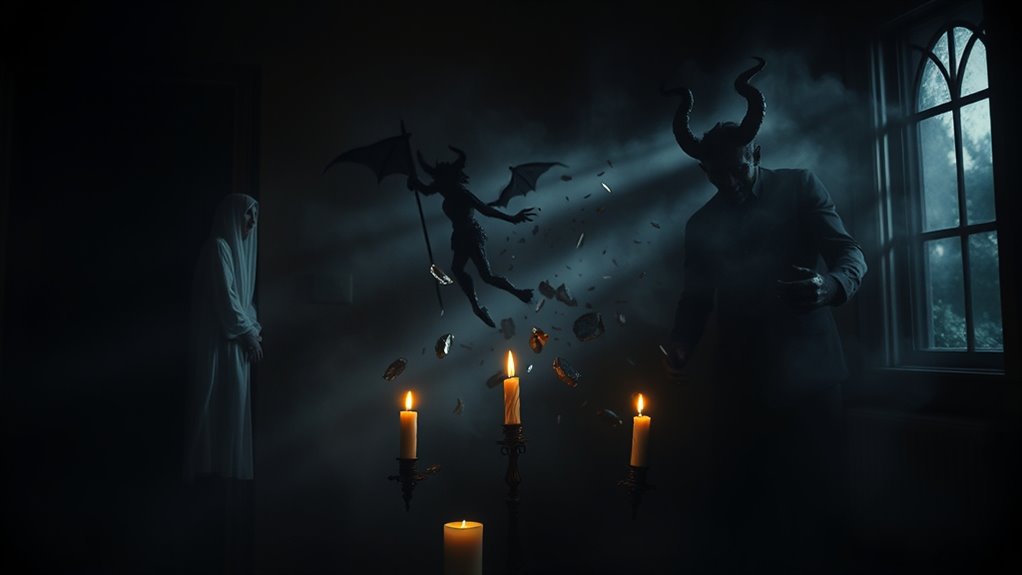
While ghosts often seek connection with the living, poltergeists take a more disruptive approach in the supernatural sphere. Known as “noisy ghosts,” poltergeists create disturbances like loud noises and moving objects.
Unlike traditional ghosts, which are disembodied human souls, poltergeists often connect with the emotional state of the living, particularly adolescents. Their actions can resemble demonic possession, as they exhibit aggressive behaviors and chaos.
Poltergeists uniquely tap into the emotions of the living, especially adolescents, manifesting chaos and aggressive behaviors reminiscent of demonic possession.
Poltergeists thrive on kinetic energy, causing ruckus rather than simply haunting a space. While some might argue that these entities are merely misunderstood, their violent tendencies set them apart from other spirits.
Fundamentally, poltergeists can embody traits similar to demons, making them a unique presence in the supernatural sphere.
Cultural Perspectives on Spiritual Entities

Cultural perspectives on spiritual entities reveal a fascinating tapestry of beliefs that shape how societies understand demons and ghosts. In various cultures, demons are often seen as malevolent beings intent on misguiding or harming humans. In contrast, ghosts are typically viewed as the spirits of the deceased, seeking closure or assistance.
Ancient Greek philosophy adds complexity, presenting demons with a dual nature, suggesting they can be both good and evil. Different religious groups offer unique interpretations regarding the origins and purposes of these spiritual entities, influencing how you might interact with them.
However, it’s crucial to recognize that pop culture often misrepresents these beings, leading to misconceptions about ghosts being inherently evil instead of simply souls in transition.
Misconceptions About Demons and Ghosts in Pop Culture
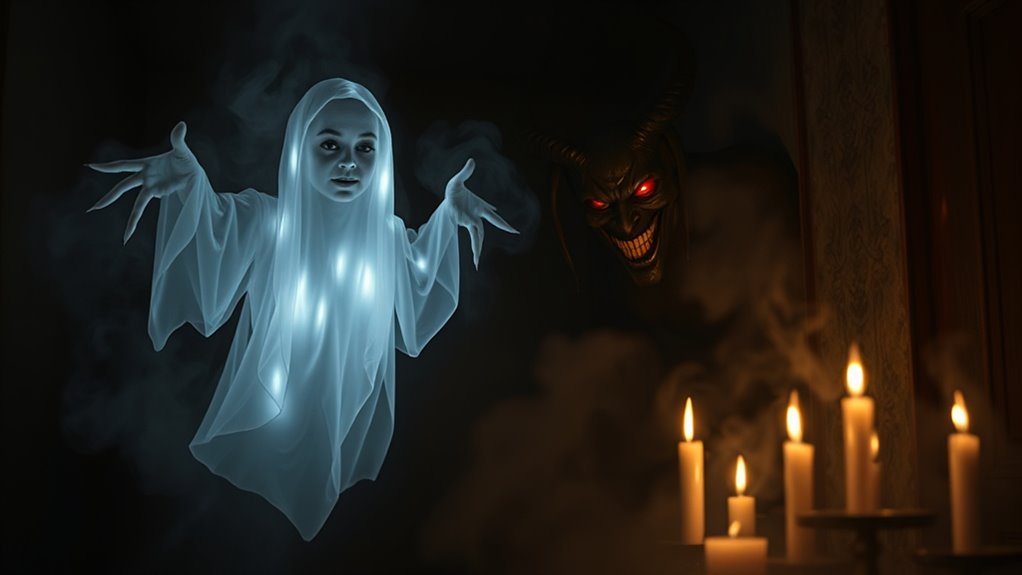
Misconceptions about demons and ghosts in pop culture can create a distorted view of these spiritual entities. Many movies blur the lines, showing both as purely malevolent spirits, ignoring that demons are fallen angels while ghosts are disembodied human souls.
This leads to a misunderstanding of ghosts as vengeful beings, when they’re often just souls in flux, needing closure. Additionally, horror films frequently misrepresent demonic possession, suggesting innocent victims are overtaken without acknowledging the role of free will.
While poltergeists are often confused with ghosts, they’re more closely linked to demons due to their disruptive behavior. These sensational portrayals contribute to significant misconceptions, impacting your understanding of the true nature and behavior of demons and ghosts.
Frequently Asked Questions
Are a Spirit and a Demon the Same Thing?
No, a spirit and a demon aren’t the same thing.
Spirits are often seen as the souls of deceased humans, while demons are typically regarded as fallen angels with malicious intent.
You might encounter spirits seeking help or closure, whereas demons aim to deceive and manipulate.
Understanding this distinction is crucial for your spiritual well-being, as it helps you navigate encounters and protect yourself from potential harm caused by deceptive entities.
Are Demons Stronger Than Ghosts?
When you consider whether demons are stronger than ghosts, you’ll find that demons indeed possess greater power.
They can manipulate their surroundings and influence human emotions, feeding off fear and negativity.
In contrast, ghosts typically have less energy and impact, often appearing sporadically.
Understanding this distinction matters, as misidentifying a demon’s strength could lead to inadequate responses to the threats they pose.
Always approach the situation with caution and awareness of their capabilities.
What Are the Five Types of Demons?
There are five main types of demons you should know about.
First, fallen angels, who rebelled against God and seek to mislead humanity.
Next, incubus and succubus, known for their sexual energy manipulation.
Poltergeists are disruptive entities linked to human emotions, causing chaos.
Elemental demons connect with natural elements and influence the physical world, while spiritual demons target souls, exploiting weaknesses for malevolent purposes.
Each type has its unique characteristics and intentions.
What Does the Bible Say About Demons?
Did you know that about 68% of adults believe in some form of evil spirit?
The Bible describes demons as fallen angels, cast out of Heaven for rebelling against God. They’re often depicted as malevolent beings seeking to lead you away from truth.
Jesus performed exorcisms to free individuals from their influence, reminding you that spiritual warfare is real.
Be cautious, as demons can masquerade as angels of light, deceiving many.
Conclusion
As you explore the mysterious world of demons and ghosts, remember that not everything is as it seems. Whether you feel a cold chill in the air or hear whispers in the dark, these entities can blur the lines of reality. You might think you’ve got it all figured out, but the truth can be more shocking than fiction. So, the next time you encounter a shadow or a strange noise, ask yourself: what’s really lurking in the unknown?
